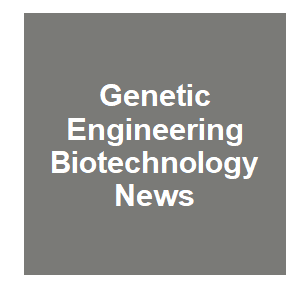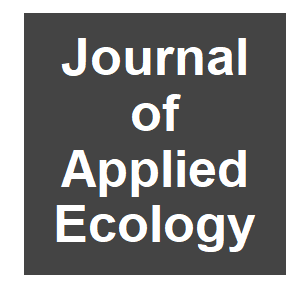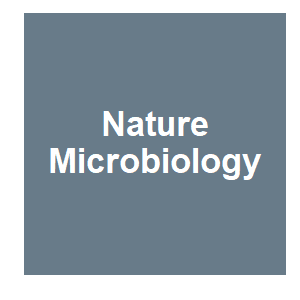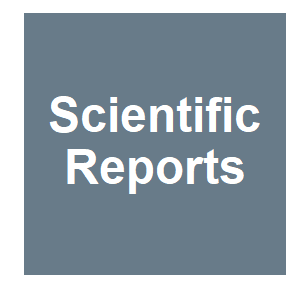
Keywords: microbes

|
A bacterial gene-drive system efficiently edits and inactivates a high copy number antibiotic resistance locusValderrama, J. A., S. S. Kulkarni, V. Nizet and E. Bier, Nature Communications, 10:5726. 2019.
Gene-drive systems in diploid organisms bias the inheritance of one allele over another. CRISPR-based gene-drive expresses a guide RNA (gRNA) into the genome at the site where the gRNA directs Cas9-mediated cleavage. In the presence of Cas9, the gRNA cassette and any linked cargo ... Keywords: gene drive genetics, gene drive mechanisms, gene drive synthetic, microbes, plants, synthetic homing drive, yeast |

|
New CRISPR system efficiently battles antibiotic resistanceBlack, Samantha, The Science Advisory Board, 2019.
Researchers from the University of California San Diego have developed a brand new CRISPR-based gene-drive system that dramatically increases the efficiency of inactivation of genes responsible for antibiotic resistance. The new system is detailed on December 16 in Nature ... Keywords: gene drive genetics, gene drive mechanisms, gene drive synthetic, microbes, plants, synthetic homing drive, yeast |

|
Antibiotic resistance hoops countered by gene drive feedback loopsGEN, Genetic Engineering & Biotechnology News, 2019.
Where a gene drive that cuts and destroys plasmids may fail, a gene drive that cuts, pastes, and copies plasmids may succeed. The “where,” in this case, is an antibiotic-resistant bacterium that carries multiple copies of an antibiotic-resistance gene. That is, the target ... Keywords: gene drive genetics, gene drive mechanisms, gene drive synthetic, microbes, plants, synthetic homing drive, yeast |

|
Tackling antibiotic resistance head-on with CRISPRThomas, L., News Medical Life Sciences, 2019.
With modern advances in genetic engineering occurring almost every day, the latest discovery concerns antibiotic resistance. Using the powerful gene editor CRISPR, scientists reported the development of a gene-drive system that is 100 times as efficient as other current systems ... Keywords: gene drive genetics, gene drive mechanisms, gene drive synthetic, microbes, plants, synthetic homing drive, yeast |

|
Predicting the spatial dynamics of Wolbachia infections in Aedes aegypti arbovirus vector populations in heterogeneous landscapesHancock, PAR, S. A.; Koenraadt, C. J. M.; Scott, T. W.; Hoffmann, A. A.; Godfray, H. C. J., Journal of Applied Ecology, 56:1674-1686. 2019.
A promising strategy for reducing the transmission of dengue and other arboviral human diseases by Aedes aegypti mosquito vector populations involves field introductions of the endosymbiotic bacteria Wolbachia. Wolbachia infections inhibit viral transmission by the mosquito, and ... Keywords: gene drive genetics, gene drive mechanisms, gene drive synthetic, microbes, plants, synthetic homing drive, yeast |

|
Design, execution, and analysis of CRISPR-Cas9-based deletions and genetic interaction networks in the fungal pathogen Candida albicansHalder, VP, C. B. M.; Chavez, A.; Shapiro, R. S., Nature Protocols, 14:955-975. 2019.
The study of fungal pathogens is of immediate importance, yet progress is hindered by the technical challenges of genetic manipulation. For Candida species, their inability to maintain plasmids, unusual codon usage, and inefficient homologous recombination are among the obstacles ... Keywords: gene drive genetics, gene drive mechanisms, gene drive synthetic, microbes, plants, synthetic homing drive, yeast |

|
CRISPR in Parasitology: Not Exactly Cut and Dried!Bryant, JMB, S.; Glover, L.; Hutchinson, S.; Rachidi, N., Trends in Parasitology, 35:409-422. 2019.
CRISPR/Cas9 technology has been developing rapidly in the field of parasitology, allowing for the dissection of molecular processes with unprecedented efficiency. Optimization and implementation of a new technology like CRISPR, especially in nonmodel organisms, requires ... Keywords: gene drive genetics, gene drive mechanisms, gene drive synthetic, microbes, plants, synthetic homing drive, yeast |

|
Two-By-One model of cytoplasmic incompatibility: Synthetic recapitulation by transgenic expression of cifA and cifB in DrosophilaShropshire, JDB, S. R., PLOS Genetics, 15:e1008221. 2019.
Wolbachia are maternally inherited bacteria that infect arthropod species worldwide and are deployed in vector control to curb arboviral spread using cytoplasmic incompatibility (CI). CI kills embryos when an infected male mates with an uninfected female, but the lethality is ... Keywords: gene drive genetics, gene drive mechanisms, gene drive synthetic, microbes, plants, synthetic homing drive, yeast |

|
Engineered integrative and conjugative elements for efficient and inducible DNA transfer to undomesticated bacteriaBrophy, JANT, Alexander J.; Adams, Bryn L.; Renberg, Rebecca L.; Stratis-Cullum, Dimitra N.; Grossman, Alan D.; Voigt, Christopher A., Nature Microbiology, 3:1043-1053. 2018.
Engineering microorganisms to promote human or plant health will require manipulation of robust bacteria that are capable of surviving in harsh, competitive environments. Genetic engineering of undomesticated bacteria can be limited by an inability to transfer DNA into the cell. ... Keywords: gene drive genetics, gene drive mechanisms, gene drive synthetic, microbes, plants, synthetic homing drive, yeast |

|
Development of a multi-locus CRISPR gene drive system in budding yeastYan, YF, Gregory C., Scientific reports, 8:17277-17277. 2018.
The discovery of CRISPR/Cas gene editing has allowed for major advances in many biomedical disciplines and basic research. One arrangement of this biotechnology, a nuclease-based gene drive, can rapidly deliver a genetic element through a given population and studies in fungi and ... Keywords: gene drive genetics, gene drive mechanisms, gene drive synthetic, microbes, plants, synthetic homing drive, yeast |

Contact
David O’Brochta
Foundation for the
National Institutes of Health
geneconvenevi@fnih.org
RSS

